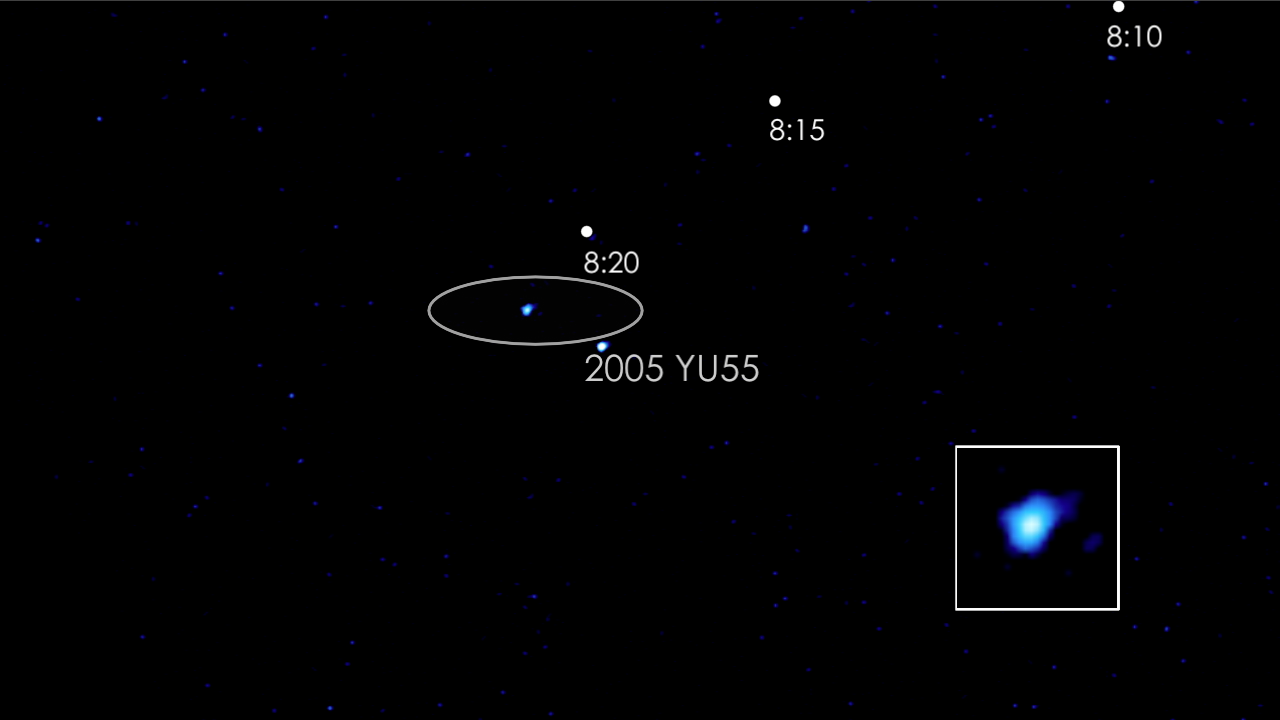Newly Renamed Swift Mission Catches a Comet Slowdown
NASA’s Swift satellite detected an unprecedented slowdown in the rotation of comet 41P/Tuttle-Giacobini-Kresák when it passed nearest to Earth in early 2017. Watch to learn more.
Credit: NASA’s Goddard Space Flight Center
Music: "Valley of Crystals" from Killer Tracks
Watch this video on the NASA Goddard YouTube channel.
Complete transcript available.
Observations by NASA's Swift spacecraft, now renamed the Neil Gehrels Swift Observatory after the mission’s late principal investigator, have captured an unprecedented change in the rotation of a comet. Images taken in May 2017 reveal that comet 41P/Tuttle-Giacobini-Kresák — 41P for short — was spinning three times slower than it was in March, when it was observed by the Discovery Channel Telescope at Lowell Observatory in Arizona.
The abrupt slowdown is the most dramatic change in a comet's rotation ever seen.
Comet 41P orbits the Sun every 5.4 years. As a comet nears the Sun, increased heating causes its surface ice to change directly to a gas, producing jets that launch dust particles and icy grains into space. This material forms an extended atmosphere, called a coma.
Ground-based observations established the 41P’s initial rotational period at about 20 hours in early March 2017 and detected its slowdown later the same month. The comet passed 13.2 million miles (21.2 million km) from Earth on April 1, and eight days later made its closest approach to the Sun. Swift's Ultraviolet/Optical Telescope imaged the comet from May 7 to 9, revealing brightness variations associated with material recently ejected into the coma. These slow changes indicated 41P's rotation period had more than doubled, to between 46 and 60 hours.
UVOT-based estimates of 41P's water production, coupled with the body's small size, suggest that more than half of its surface area contains sunlight-activated jets. That's a far greater fraction of active real estate than on most comets, which typically support jets over only about 3 percent of their surfaces. Astronomers suspect these active areas are favorably oriented to produce torques that slowed 41P’s spin.
Such a slow spin could make the comet's rotation unstable, allowing it to begin tumbling with no fixed rotational axis. This would produce a dramatic change in the comet’s seasonal heating and may result in future outbursts of activity.

On March 14, 2017, two weeks before its closest approach to Earth, comet 41P/Tuttle-Giacobini-Kresák glides beneath the galaxy NGC 3198. The green glow comes from light emitted by diatomic carbon molecules.
Credit: Copyright 2017 by Chis Schur, used with permission

This illustration shows a jet of gas, dust and ice blasting from the surface of a small comet like 41P. Strong jet activity, enhanced by a comet's shape and small size, can produce torques that alter the comet's spin.
Credit: NASA's Goddard Space Flight Center

Comet 41P/Tuttle-Giacobini-Kresák orbits the Sun every 5.4 years, traveling only about as far out as the planet Jupiter, as shown in this illustration. Jupiter's gravitational influence is thought to have captured 41P into its present orbit.
Credit: NASA's Goddard Space Flight Center

A comet warms up as it approaches the Sun in this illustration. Increased heating causes surface ice to change directly to a gas, producing jets that launch dust particles and icy grains into space. This material forms an extended atmosphere, called a coma, that gives a comet it's fuzzy appearance.
Credit: NASA's Goddard Space Flight Center

NASA's Swift spacecraft, now renamed the Neil Gehrels Swift Observatory after the mission's late principal investigator, has become the go-to facility for rapid-response, multiwavelength follow-up of time-variable sources. This illustration highlights the diversity of Swift's work, which ranges from comets in our solar system to observations of variable sources in our galaxy and beyond.
Credit: NASA's Goddard Space Flight Center

NASA's Swift spacecraft, now renamed the Neil Gehrels Swift Observatory after the mission's late principal investigator, has become the go-to facility for rapid-response, multiwavelength follow-up of time-variable sources. This illustration highlights the diversity of Swift's work, which ranges from comets in our solar system to observations of variable sources in our galaxy and beyond. Objects labeled only.
Credit: NASA's Goddard Space Flight Center

NASA's Swift spacecraft, now renamed the Neil Gehrels Swift Observatory after the mission's late principal investigator, has become the go-to facility for rapid-response, multiwavelength follow-up of time-variable sources. This illustration highlights the diversity of Swift's work, which ranges from comets in our solar system to observations of variable sources in our galaxy and beyond. Name only.
Credit: NASA's Goddard Space Flight Center

NASA's Swift spacecraft, now renamed the Neil Gehrels Swift Observatory after the mission's late principal investigator, has become the go-to facility for rapid-response, multiwavelength follow-up of time-variable sources. This illustration highlights the diversity of Swift's work, which ranges from comets in our solar system to observations of variable sources in our galaxy and beyond. Unlabeled version.
Credit: NASA's Goddard Space Flight Center
For More Information
Credits
Please give credit for this item to:
NASA's Goddard Space Flight Center. However, individual items should be credited as indicated above.
-
Producer
- Scott Wiessinger (USRA)
-
Science writer
- Francis Reddy (Syneren Technologies)
-
Scientist
- Dennis Bodewits (University of Maryland College Park)
-
Animator
- Scott Wiessinger (USRA)
-
Narrator
- Scott Wiessinger (USRA)
-
Illustrator
- Francis Reddy (University of Maryland College Park)
Release date
This page was originally published on Wednesday, January 10, 2018.
This page was last updated on Wednesday, May 3, 2023 at 1:47 PM EDT.
Missions
This page is related to the following missions:Series
This page can be found in the following series:Related papers
https://www.nature.com/articles/nature25150
https://www.nature.com/articles/nature25150


